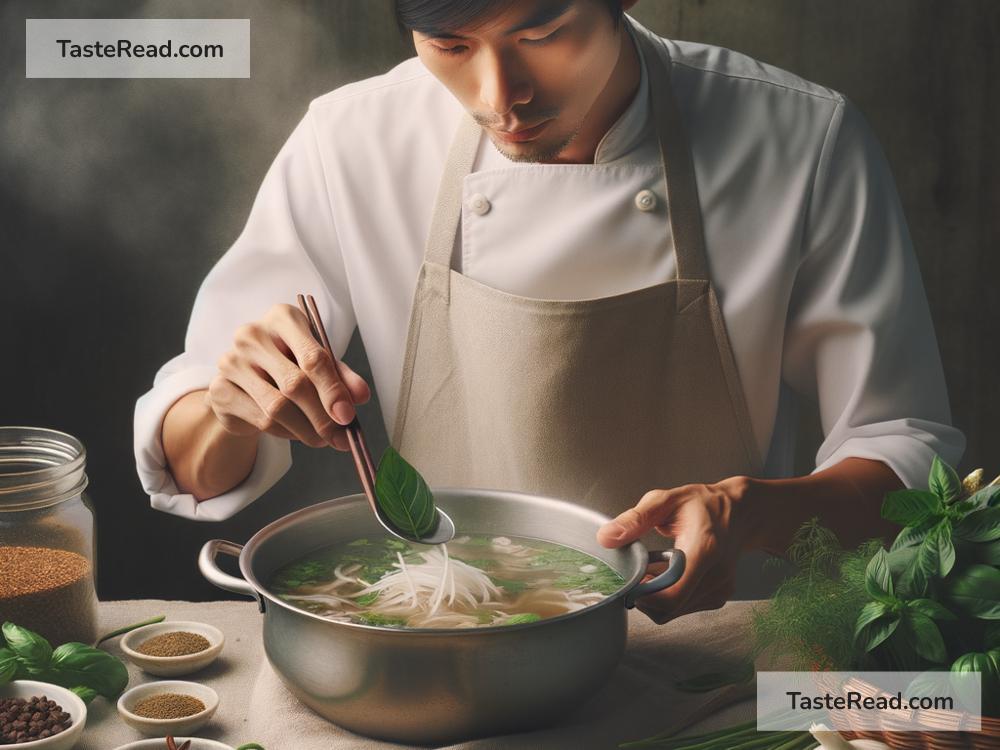Finding the Perfect Harmony: My Journey to Mastering Flavors in Vietnamese Pho
Cooking has always been a form of artistic expression for me, a way to blend different elements into something wholly unique and pleasurable. My journey into the heart of Vietnamese cuisine, particularly the art of making Pho, is a testament to this statement. Pho, a staple dish in Vietnam, is much more than just a bowl of soup. It’s a symphony of flavors, a delicate balance of sweet, salty, sour, and umami that dances on your palate. Learning to perfect this harmony was not easy, but the experience was entirely enriching.
The Initial Plunge
My adventure began with a simple desire to recreate the authentic taste of Pho I experienced in a small, unassuming restaurant during my travels in Vietnam. The complexity and depth of the broth intrigued me; the way the spices, the meat, and the herbs came together created a flavor profile that was both robust and comforting.
The first few attempts at making Pho were, frankly, a bit of a disaster. My broth was either too salty or too bland, the spices either overwhelming or underwhelming. I quickly learned that making Pho was not just about throwing ingredients into a pot, but about understanding and respecting each element’s role in the dish.
Understanding The Core Elements
The foundation of a good Pho lies in its broth. The two critical aspects here are the quality of your bones (if making a non-vegetarian broth) and the char on your ginger and onions. The first few times, I overlooked the importance of charring these aromatics, which resulted in a lack of depth in the flavor. I also learned the hard way that not all bones create the same richness – a mix of marrow bones and knuckles provided the complexity I was seeking.
Next came the spices – star anise, cinnamon, cloves, cardamom, and coriander seeds. Each spice had to be lightly toasted to release its oils and then wrapped in cheesecloth to prevent them from overpowering the broth. The balance here was crucial; too much of any spice, and the broth became a muddled mess of flavors.
Then there was the challenge of achieving the perfect flavor balance. Traditional Pho is a careful dance between salty, sweet, sour, and umami. Too much fish sauce, and the broth became unbearably salty. Too little, and it lacked that essential umami punch. Rock sugar helped round out the flavors, adding just a hint of sweetness, while the acidity from a squeeze of lime in the serving bowl brightened the whole dish.
The Breakthrough
The breakthrough came when I stopped following recipes to the letter and started understanding the why behind each step. Why char the onions? To add depth and a slight smokiness. Why toast the spices? To unlock their oils and aroma. The more I understood the role of each ingredient, the better I became at adjusting the levels to find that perfect balance.
Tasting became my most valuable tool. I learned to taste the broth at each stage, adjusting the seasoning gradually and giving the flavors time to meld together. It was a slow process, often requiring hours of simmering and patience, but the end result was always worth it.
The Final Piece: Freshness and Texture
What truly elevates Pho, however, is the freshness of the herbs and the texture of the noodles. Freshly sliced onions, chopped cilantro, basil, and bean sprouts added just before serving, introduced a fresh, crisp contrast to the rich, aromatic broth. The rice noodles, cooked just until tender, provided the perfect vehicle for all these flavors.
Sharing the Love
After numerous trials and errors, the day I finally nailed the recipe, I knew I had to share it with friends and family. The joy of watching their faces light up at that first spoonful was indescribably fulfilling. I had managed to capture the essence of that unforgettable bowl of Pho from my travels, bringing a piece of Vietnam into our home.
Conclusion
Learning to balance the flavors in Vietnamese Pho taught me much more than just how to make a dish; it taught me patience, the importance of understanding my ingredients, and the joy of sharing a perfectly crafted meal with loved ones. Cooking Pho has become more than just a culinary endeavor; it’s a cherished ritual that connects me to memories, places, and people. The journey from those first disastrous attempts to the flavor-packed bowls I can now confidently serve has been a rewarding one, shaped by love, learning, and the quest for the perfect balance of flavors.


